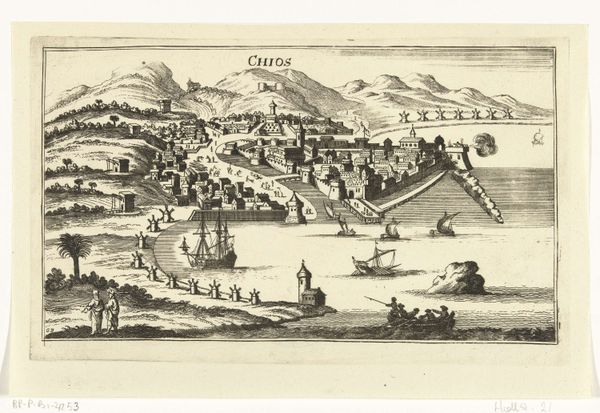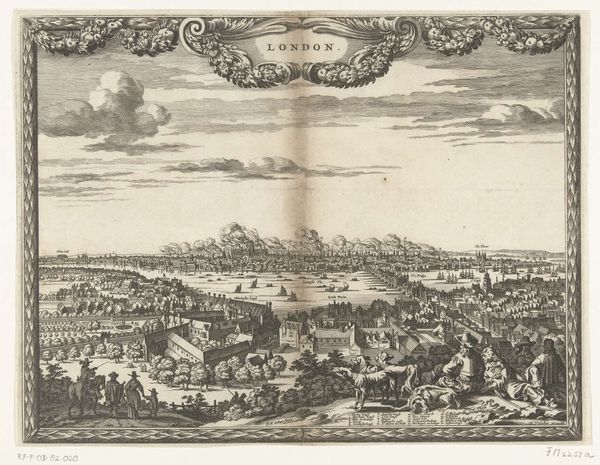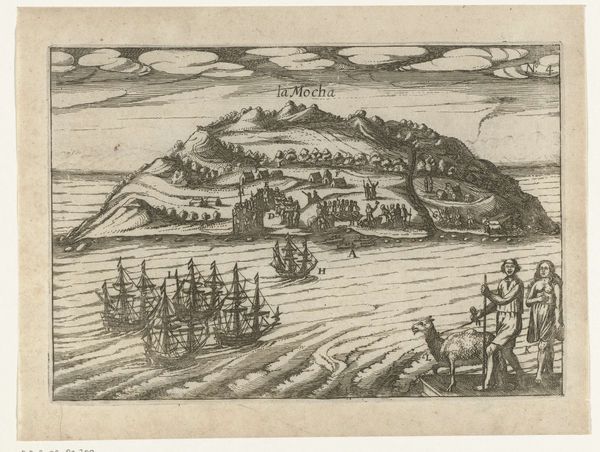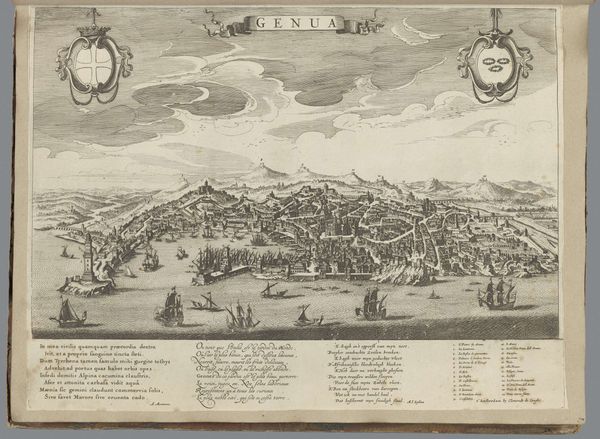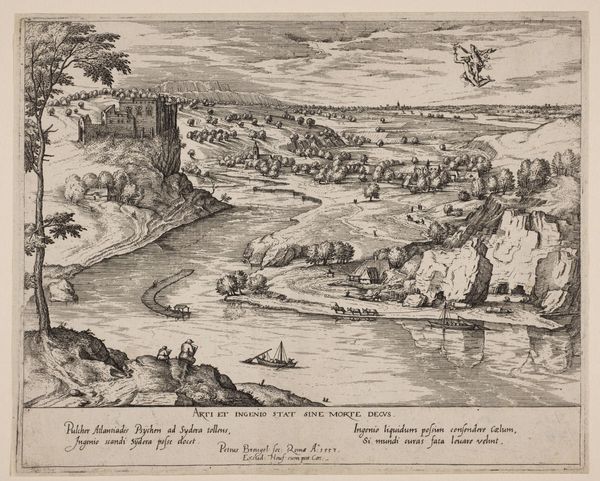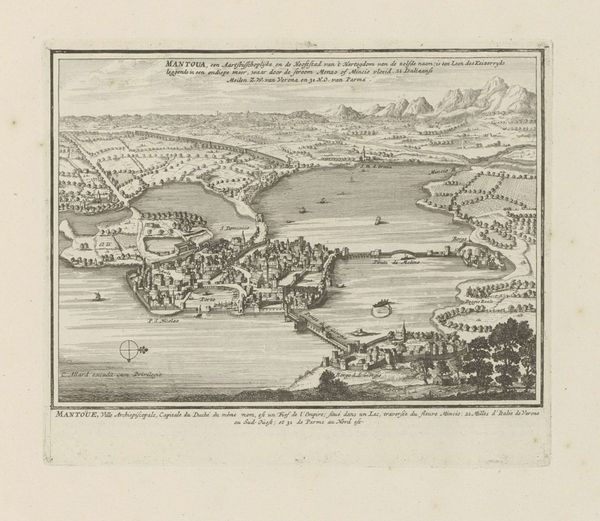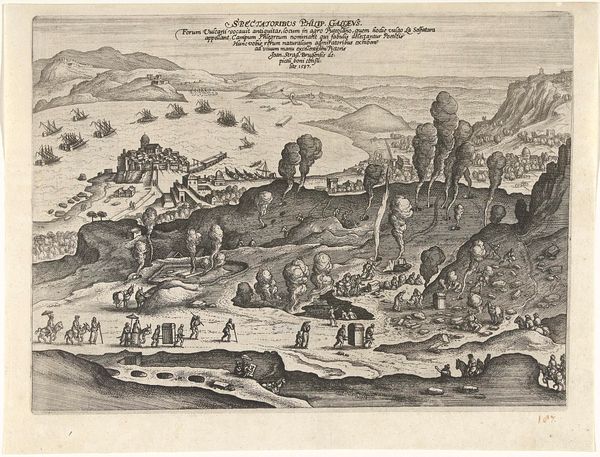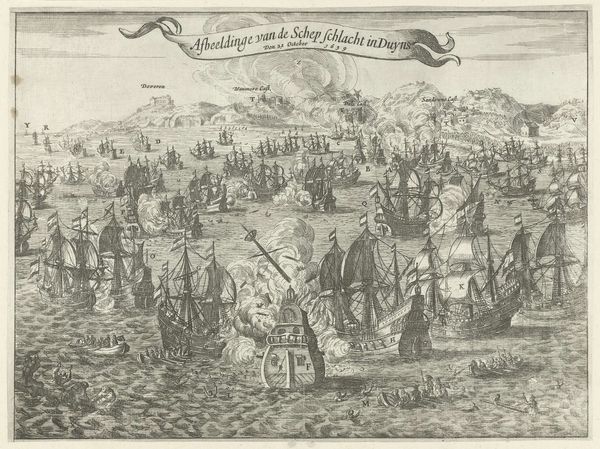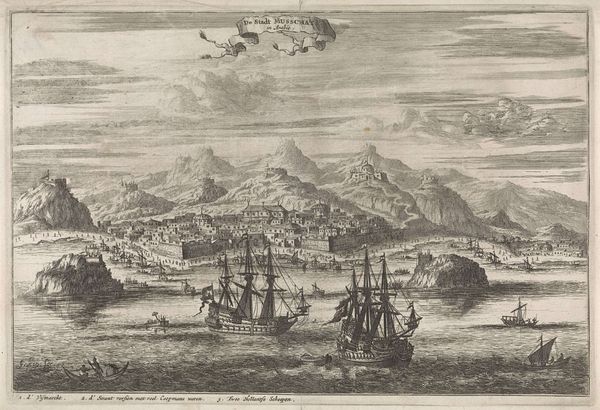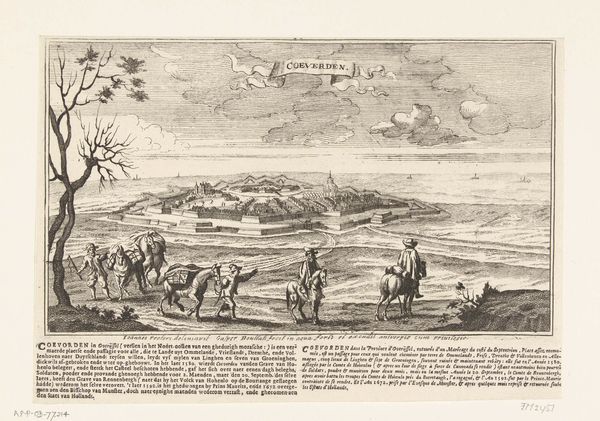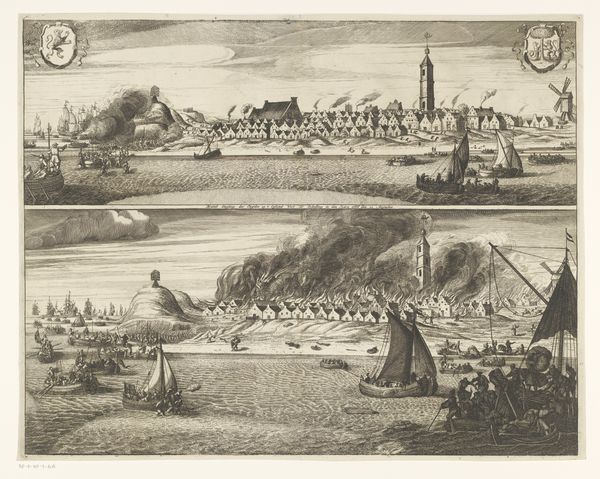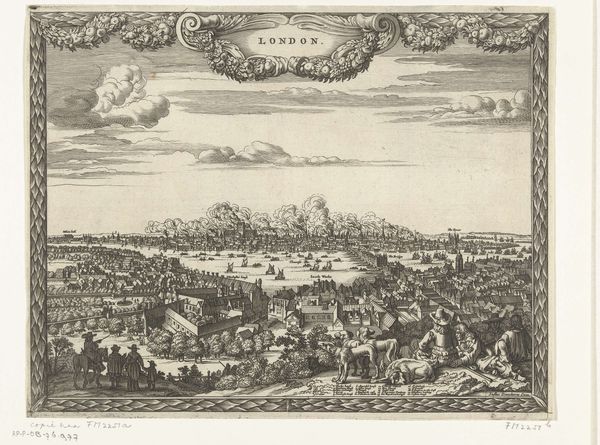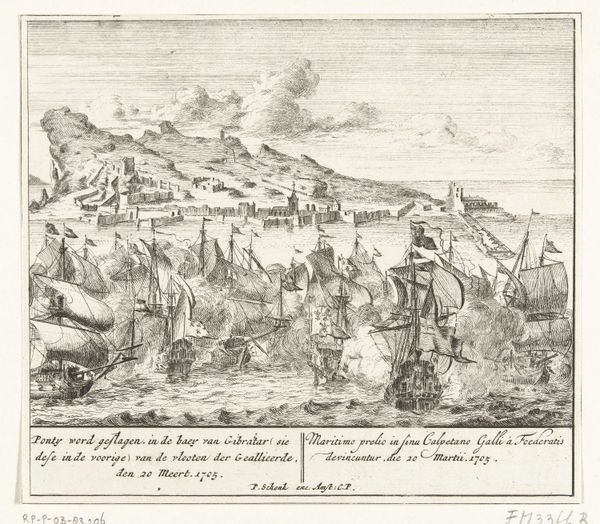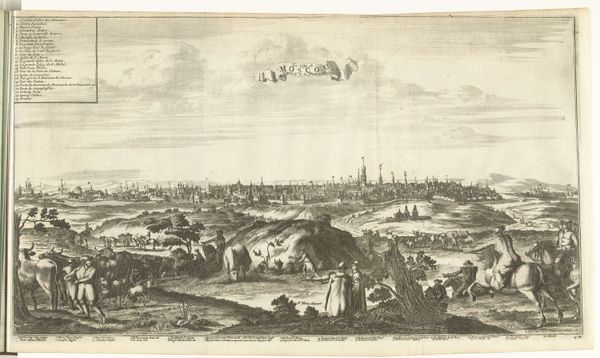
print, etching, engraving
#
pen and ink
#
baroque
#
dutch-golden-age
# print
#
etching
#
landscape
#
line
#
cityscape
#
history-painting
#
engraving
Dimensions: height 170 mm, width 245 mm
Copyright: Rijks Museum: Open Domain
Curator: This is "Gezicht op Schenkenschans" by Gaspar Bouttats, created around 1679. The print, etched and engraved, resides in the Rijksmuseum's collection. Editor: My first impression is the stark, linear quality. The meticulous details almost create a map-like texture, dominated by horizontal lines emphasizing the flat Dutch landscape, punctuated by the vertical masts of the sailing vessels. Curator: Indeed. This bird’s-eye view encapsulates not just the topography of Schenkenschans but also its strategic importance. The fortress played a key role in controlling access along the Rhine, witnessing numerous sieges and shifts in power during the turbulent 17th century. Its repeated capture underscored its vital role in geopolitical struggles. Editor: Absolutely. Consider how Bouttats uses line weight and density to distinguish the key elements—the fortress sharply defined, versus the softer rendering of the distant hills. Note also the use of hatching to create subtle tonal shifts, adding depth. Curator: The inclusion of figures in the foreground, though small, anchors the image and hints at the bustling activity of the port. These elements establish a certain socio-political presence within the constructed landscape, reminding viewers of the community sustained within and around Schenkenschans. Editor: It's fascinating how the print uses graphic language conventions to create depth and simulate light. It calls to mind linear perspective with the scaling down of shapes into the background and aerial perspective, which is mostly limited to light striations simulating cloud cover. The boats create wonderful directional pull that takes your eye toward the distant mountains, implying expansive spatial dimension in limited value ranges. Curator: So, while seemingly just a landscape, the work embodies a moment in time and reflects strategic considerations during a fractious time. Bouttats' etching allows us a window into the 17th-century contest for dominance. Editor: Agreed, that strategic use of light and dark enhances the entire scene, giving the etching more weight in terms of art history. Curator: Precisely. The print not only illustrates a place, but also represents the human efforts to dominate its environs and control its resources. Editor: Seeing how Bouttats rendered form from line gives an important lesson on graphic construction that even contemporary artists could benefit from.
Comments
No comments
Be the first to comment and join the conversation on the ultimate creative platform.
